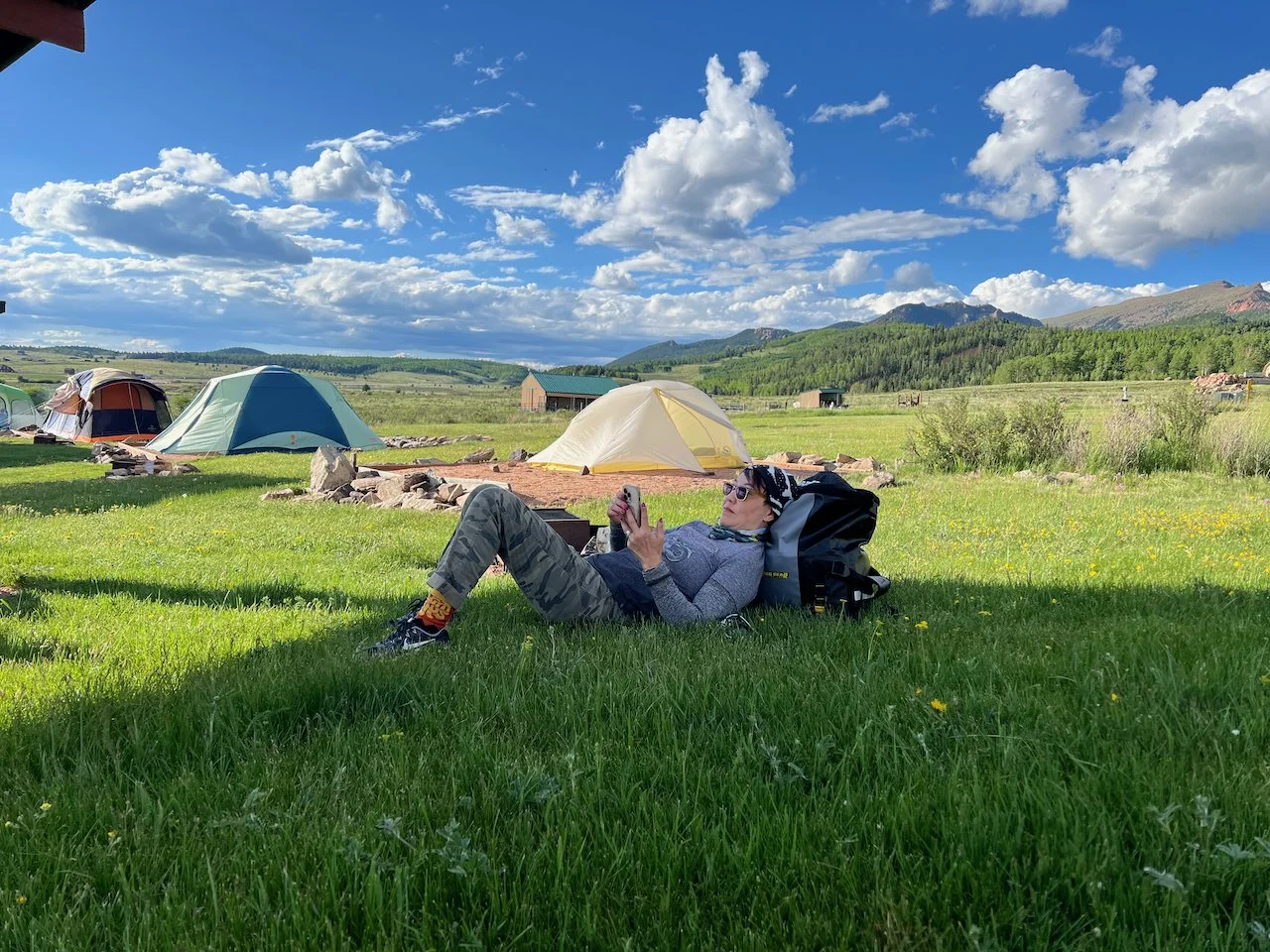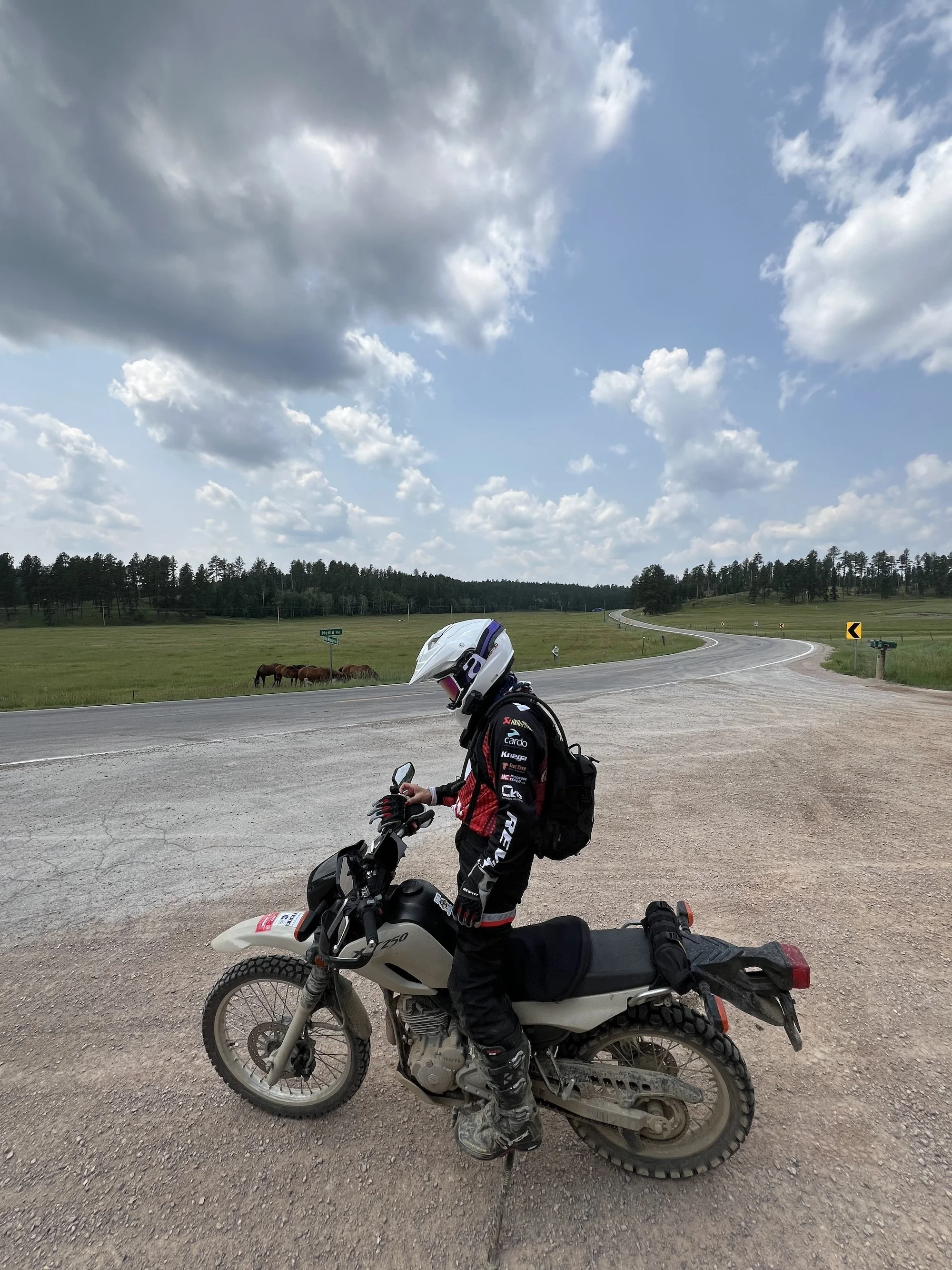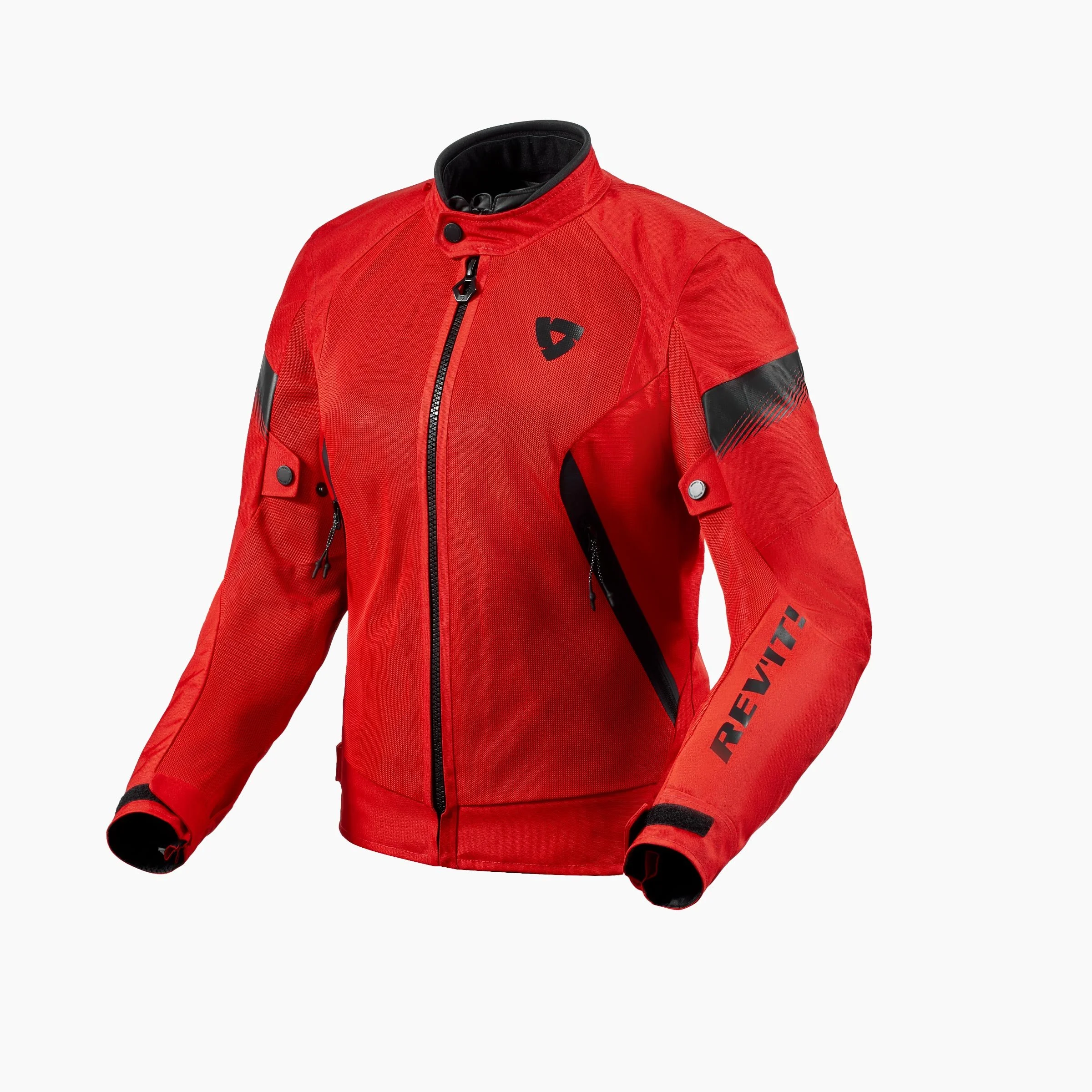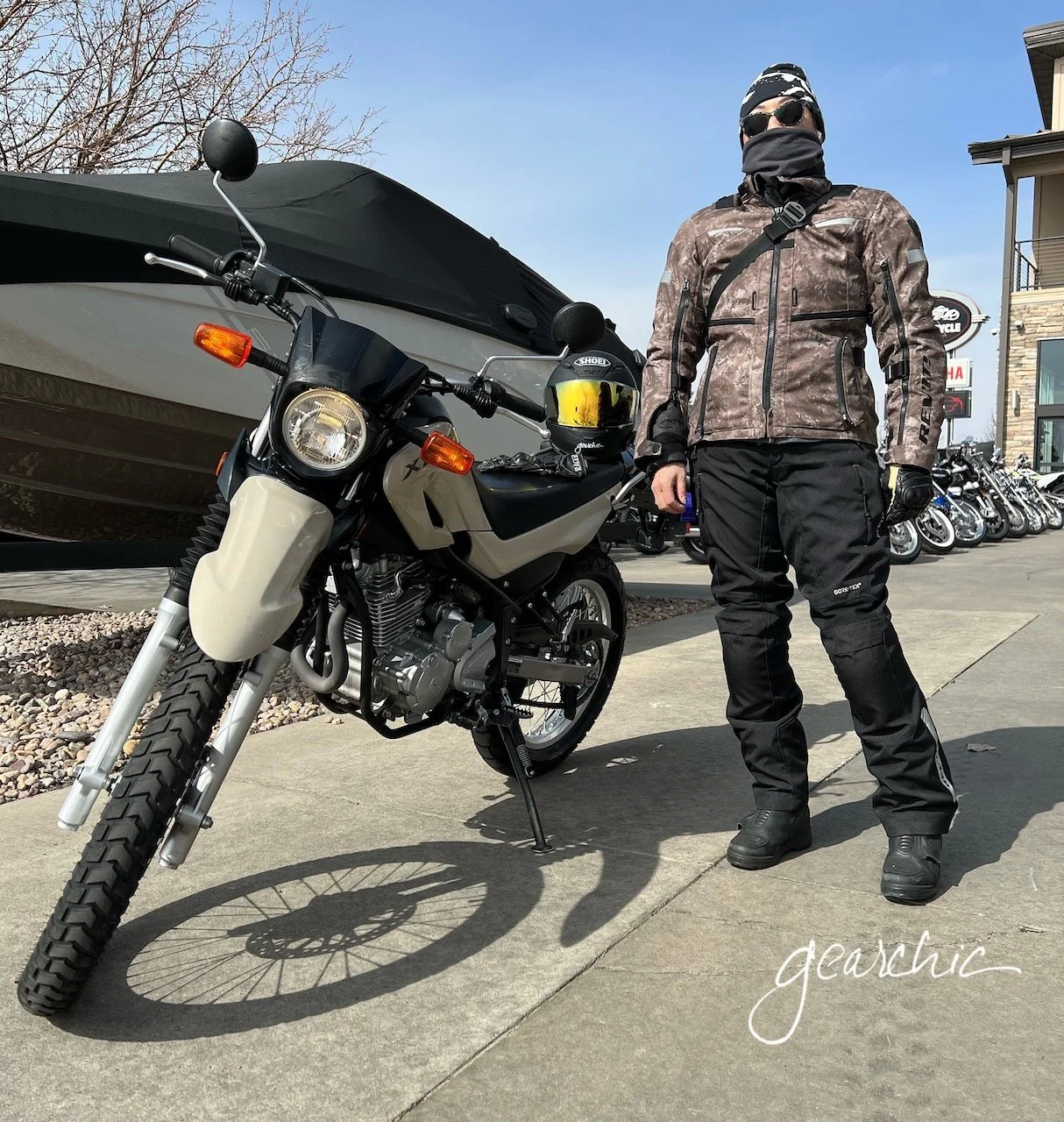Well it's been almost 3 weeks since I've been out riding. I know, I know! How could I?
Adding Reflectivity to your Gear
One blog that I have in my RSS Feed is CoolTools by Kevin Kelly. I always see something cool every week that I could apply to riding. One is super reflective tape:
http://www.kk.org/cooltools/archives/002843.php
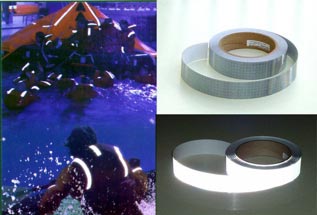
If you have no reflective material on your gear, you could try using this (which seems stronger than what you can buy at places like Cycle Gear) and cutting out some unique shapes. I may try doing this to add some small reflective symbols to the bottom of my new jacket.
New Gear. Mmmmmmmm.
So aside from the Olympia Pro Pants, I picked up the jacket I've been lusting after, the R'evit Pearl I posted about recently. I had to go all out and get it in Pearl Grey for better visibility. I've been wearing an almost all black outfit for a few years now, so I thought it would be a good idea to wear something lighter at eye level.
So far I'm enjoying both the pants and the jacket. Not just because they look really cute as an outfit, but because they actually work like they're supposed to and are comfortable at the same time.
I owe this post (and the review pages on my website) some photos of me wearing them, which I promise to add this week.
FAQs
10/9/09: This is an update to a blog post originally posted back in May '08.
I recently received a wonderful email from a reader in Berkeley who asked me a couple of great questions that I frequently see from new riders, or riders who are new to wearing protective gear. I know some of you are still sporting your white sneakers, jeans, jacket w/out any armor and very thin gloves while riding. (for shame! :P)
Many people will tell you that if you can't afford to buy gear, then you shouldn't be buying a motorcycle. In *my* opinion, I would say that's partly true. If you don't plan to take at least $500 of the $2,000-$5,000 you're about to throw down on a fancy (new or new to you) motorcycle on gear, then you may want to wait a little bit until you can save up for that. Or, consider buying a less expensive bike. Believe it or not, wearing the right gear can really affect your riding experience. You will have more fun on that 2 hour ride when cold air isn't blasting down your neck, making you think about how cold it is instead of how you have to slow down for the next curve.
Q: What should I be looking for in a helmet and how should it fit? What's the difference between a $200 and a $400 helmet?
First off, you have to try on as many helmets as you can! Even if you can't afford a $500 Arai, try it on anyway. You need to gain a frame of reference for how different brands fit until you find a lower end helmet that fits your head *almost* as good as the $500 one. You may find that sizes are going to be different between brands as well. (i.e. HJC helmets can be one full size bigger than many other styles because it has such a large round head shape). Fit is the most important thing when buying a helmet!
When you try on helmets, these are a couple of things you want to look for in terms how it feels on your head:
- Free Movement: When the helmet is on, move your head from side to side. The helmet should not move freely when you do this.
- Chipmunk Cheeks: You should definitely feel and see this happening to your cheeks. I know looking like a chipmunk isn't 'cool', but in time the cheekpads will break in and your cheeks will become less chipmunk like. Keep in mind that the helmet is brand spanking new, and needs to break in! All the foam will relax and give you about 1/8" all the way around. You may want to ask the salesperson how long the display helmet has been out, and that may give you an idea of how much the helmet may already be breaking in.
- Fingertip tests: Take your index finger in see how much space is between your forehead and the helmet. If you can slip more than the tip of your finger between your head and the helmet, then you're not filling out the helmet as much as you should. Then take both index fingers and see how much space is between the area right below your temples and the helmet. Or ask your friend to do this for you. Again, if you can fit more than your finger tip (to the 1st joint on your finger) into the helmet, then your head isn't filling out the interior of the helmet fully. You may find that you can fit your entire finger into the sides of your helmet.
- Does it feel like the helmet is pushing on your forehead (the helmet is too small from front to back)? Does it feel like the helmet is squeezing your temples (the helmet is too narrow from ear to ear)
- Definitely walk around in the helmet for a good 5 minutes in the store. You may not notice pressure points until you've worn the helmet around a bit. If this is your first helmet, this is going to be a new and possibly clausterphobic experience for you. Helmets break in after you wear them for the first 10-15 times. You have to start out snug, because it will fit slightly larger after you break them in. So if you wish the helmet were just a *little* bit looser, then that's probably the right fit.
You'll see plenty of cheap helmets on eBay. Why not pick a $70 helmet and save some money? Your helmet is supposed to fit properly in order to protect that wonderful head. If it doesn't fit right, it's not going to work in the event of a crash. Helmets are engineered to stay on your head and not move, to become an outer shell for your head. You do not want that helmet to shift, crack, move around or come off if you should crash in it. Everyone's head is shaped differently. A $450 helmet such as an Arai will probably end up fitting you better than a $150 HJC. And the fact that an Arai Quantum will fit a petite head far better than an HJC. Arais are also hand made in Japan. Factor that in and your price goes up quite a bit. And a carbon fiber HJC will probably fit better than a low end helmet.
Q: What kind of riding boots should I wear?
A: First, I would read this:
http://motorcycleworld360.com/2007/09/04/motorcycle-boot-buying-for-
newbies/
At the minimum, I tell people to cover their ankles. Wear a sturdy boot, preferably Leather or a kevlar/strong textile combo to help with abrasion. The other reason you want to wear a boot is traction! Being able to handle your 300lb+ beast starts with your feet. Especially for those of us who are vertically challenged. When you feel stable with 2 feet firmly on the ground (or on the balls of our feet), then that will definitely flow through to the rest of your body. How else are you supposed to hold up something that weighs 3 times as your body weight?
You also want that boot to protect that small, vitally important area of your foot called your ankle. Check out this interesting article about the mechanical properties of 'off-road' boots: http://www.teamorthopedics.com/boots.html
Abstract: "Mechanical properties of several contemporary off-road motorcycle boots and one boot of older design were evaluated to define features which may help prevent musculoskeletal injury. The boots were subjected to mechanical loading of the toebox, midfoot and ankle to define the stiffness to various extrinsic loads similar to those thought to be typical of competitive off-road motorcycle riding."
Some of you may know that I'm *crazy* about my Daytona's, but if you can't spend that much yet on boots, you don't have to. There are many options out there for $300 and under.
Q: I'm looking at gear right now and am really confused about the whole mesh vs. leather debate. It seems like almost everyone agrees that mesh is better than nothing, but much less preferable than leather. But based on your blog, you must disagree? Do you have any thoughts on the mesh vs leather debate? I'm planning to ride my bike about 20 miles round trip every day.
A: The general thought on mesh/textile vs. leather is that leather has a stronger abrasion resistance when (god forbid) you are sliding on impacting the pavement. But, textiles have come a long way and there are a lot of options out there with much higher tensile strength/abrasion resistance than they used to. Materials like Cordura and Kevlar are incorporated into many brands of textiles. It also can vary between brands. Higher end brands such as REV'IT, Vanson and AlpineStars use much higher quality fabrics than other brands. That's why you pay $500 for some textiles and $200 for others.
I would say mesh is not going to hold up in a crash as well as solid textile or leather of course. Wearing proper leathers head to toe is really the best way you can protect yourself. Personally, I don't have any mesh gear. I've only worn my 2 piece leathers, even in 80-90 (F) degree heat. I'm lucky that I live in San Francisco, where the weather is pretty damn good year round. If I had to deal with 90 degree heat + humidity 6 months out of the year, then I might have a different opinion.
In my experience, I've noticed the main benefit with textile is warmth. If you find a good textile with a liner, you'll be amazed at how much warmer it is compared to a $500 Dainese leather jacket with a liner. I've found that I can ride in below 60 F degrees with my Rev'it textile than my Dainese leather. Not all textiles work this well, but the higher end brands do. Textiles are extremely useful too, especially if you ride in the rain!.
Q: What should I be looking for when shopping for a textile jacket? How should a textile jacket fit? Does it need to be as snug as leather? Why would a $500 jacket be better than a $150 one?
A: I've written a little bit here. But let's expand on that a bit. A textile does not need to be as tight as leather in terms of fitting closer to the body. Leather stretches, so you need to find a snug jacket or pair of pants (why do we call them pairs when it's just one pant?) when shopping for leather.
Things to ask yourself:
- What do I want out of my jacket?
- Do I need a warmth liner?
- Do I need it to be waterproof?
- Do I want something vented or perforated for warmer weather?
- Do I want a 3/4 length or short length jacket?
Things that you'll be looking for and/or seeing while shopping:
- Velcro closure or snug zipper closures around the wrists and neck (nothing feels worse than air scooping down your neck into your shirt on a cold night!)
- Adjustable velcro or other adjustments to cinch at the waist
- Zippers: Interior zippers on the bottom of the jacket might be there so you can zip them to your overpants. Many jackets will come with the bottom piece of the zipper so you can sew them into any overpant.
- Venting: Is there enough on the arms/shoulders? Back?
- Reflective areas: Is there any reflective material(s) on the jacket?
- Removable liner(s): A removable liner makes the jacket all that much more versatile.
- Reinforced seams/double stitching
- How does it fit in Riding Position? This is the most important position to consider when trying on jackets. Of course you should be able to walk around comfortably with it, but not fully zipped/velcro'd while in a standing position. You are looking for the perfect fit while seated on your bike. If possible, sit on a bike in the showroom or even better, go shopping with your bike so you can test your gear out!
More to consider:
- Weight/strength of the textile
- If the shell/exterior of the jacket is supposed to be waterproof, the zippers should be sealed and and there might be velcro flaps over the pockets (ex. Olympia AST Jacket). So you can wear just the shell without the liner and it'll be waterproof. If there's a liner, and the zippers aren't sealed then the liner is what's going to be waterproof,not the shell. (ex. Olympia Airglide Jacket).
- You may want to bring your gloves when trying on jackets to make sure they'll zip over or under the sleeve. (your preference, but if you can close the glove over your sleeve, you'll be warmer)
- Textile jackets will also be fit for riding position. The arms will be longer, and there will be less material across your chest to accommodate the most aggressive riding position.
- Try and find the fit for how you'll wear it 90% of the time. If the jacket has 2 liners, it's going to be a little tight at the elbows and/or shoulders. With a full sleeve liner, more than likely the garment is not meant for you to wear more than a long sleeve shirt, but not a thick fleece sweatshirt or north face type of jacket. Some jackets that have a vest liner may be more suitable for spring/summer.

